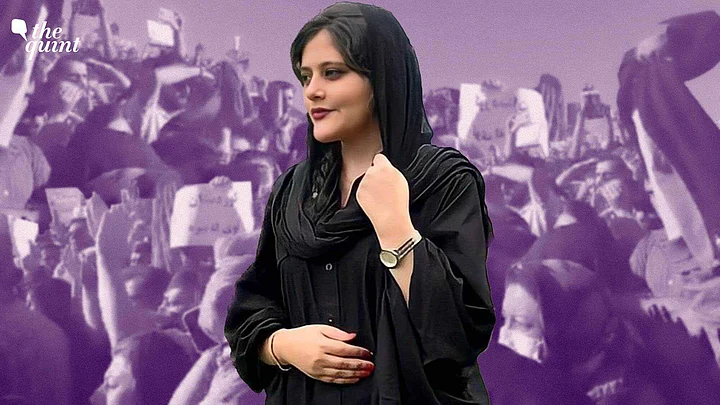Wednesday, 26 October, marks forty days since the death of Mahsa Amini in Iran – the end of the traditional Iranian mourning period.
Amini's death, which had sparked global outrage over the status of women in Iran, has now become a defining yet distant dot in the timeline of the ongoing women's movement in the nation.
While the movement began as an outcry over Amini's death under suspicious circumstances after she was detained by Iran's Morality Police for breaching rules requiring women to wear hijab and modest clothes, it has now evolved into a widespread call for amendment of Iran's governance.
Since Amini's death, at least 234 people, including 29 children, have been killed in the nationwide protests, as per Iran Human Rights.
Iran Saw Many More Mahsa Aminis in 40 Days
As in Mahsa Amini's case, several women protesters have died under dubious circumstances that point to foul play by the authorities.
Four days after Amini's death, 16-year-old Nika Shakarami went missing in Tehran on 20 September after telling a friend that she was being chased by police. The state TV later broadcast her relatives claiming that Nika was killed by a fall from a building. However, BBC Persian, citing a source, reported that "forced confessions" were made in the face of threats to the rest of the family.
Hadis Najafi, 22, was shot dead by security forces while protesting in the city of Karaj, west of Tehran, on 21 September, as per her family. Officials allegedly asked her father to say that she died of a heart attack.
Human Rights organisation Amnesty International reported the death of another 16-year-old girl, Sarina Esmailzadeh, during the protests in Gohardasht on 23 September. The teenager died after security forces struck her head with batons. A source told Amnesty International that security and intelligence agents have subjected the girl's family to intense harassment to coerce them into silence.
As per the findings of Iran Human Rights, returning bodies is made contingent on families promising to stay silent or confirming the false causes of death cited by the Forensic Medical Organisation on the death certificates.
Family members have been subjected to coercion to pipe the false narratives woven by security forces. The scenarios have included "falling from a height, car accident or poisoning by drugs, alcohol or food."
Tensions Rise on the Eve of 40-Day Ceremony
Women and schoolgirls, who have been at the forefront of the anti-government demonstrations, are expected to rally in huge numbers across the nation on Wednesday.
Iranian students defied crackdowns to stage protests at various universities on Tuesday – the eve of the ceremonies marking 40 days of Amini's death.
Videos circulated on Twitter showed students protesting at Tehran Azad University, Beheshti University, Khaje Nasir Toosi University of Technology, and Shahid Chamran University, among others. "Students will die, but won't tolerate indignity!" was one of the slogans being raised, as per the footage.
Meanwhile, in Saqqez, Kurdistan, which is Amini's hometown, protesters outside a local hotel were shot at by anti-riot and Basij paramilitary forces.
Amid heightened tensions, Amini's family has been threatened against holding a ceremony for her. Hengaw human rights organisation reported that government intelligence agencies have ordered the mourning family to release a statement cancelling the ceremony, or Ashkan, Mahsa's brother, will be arrested.
(With inputs from BBC.)
